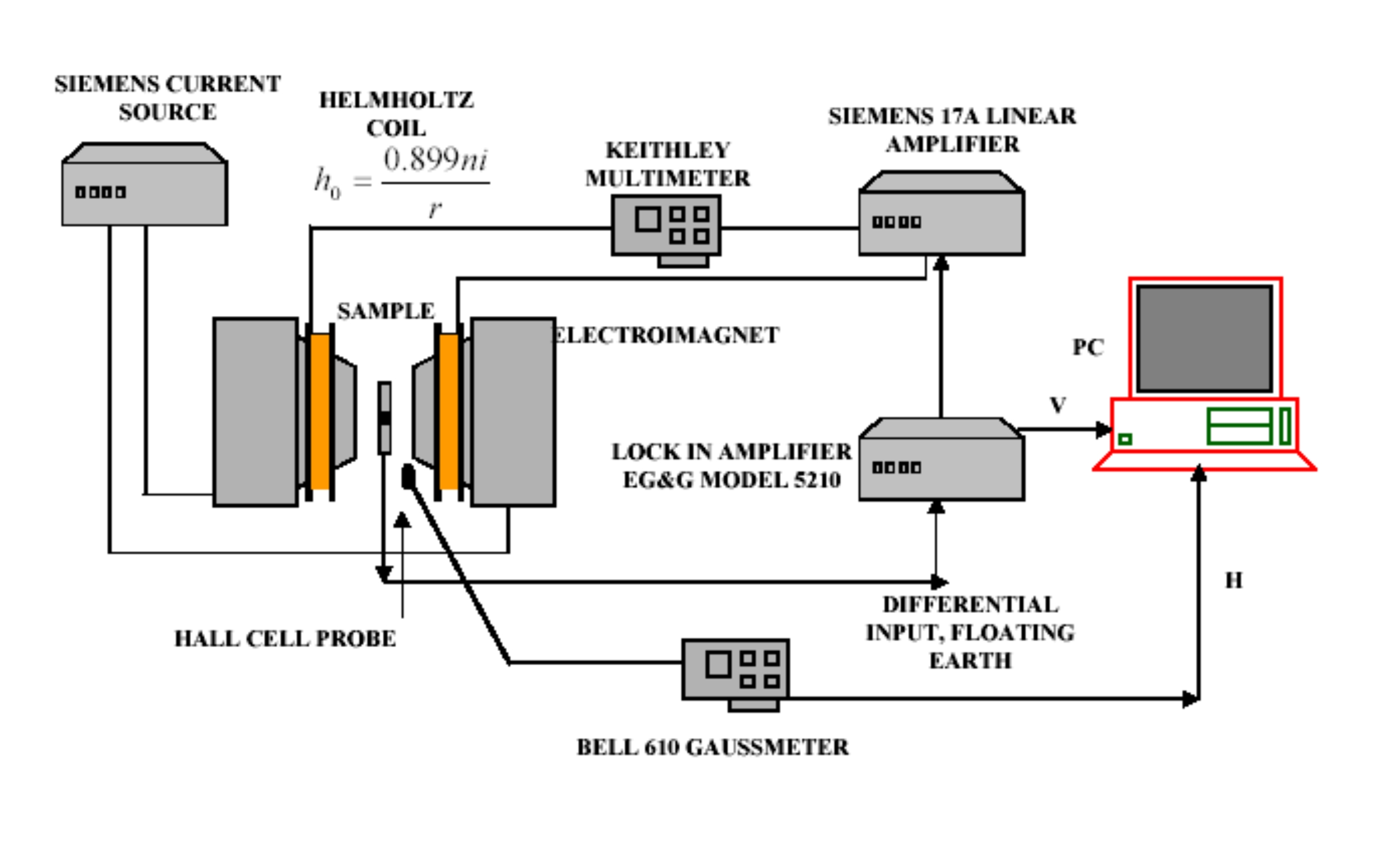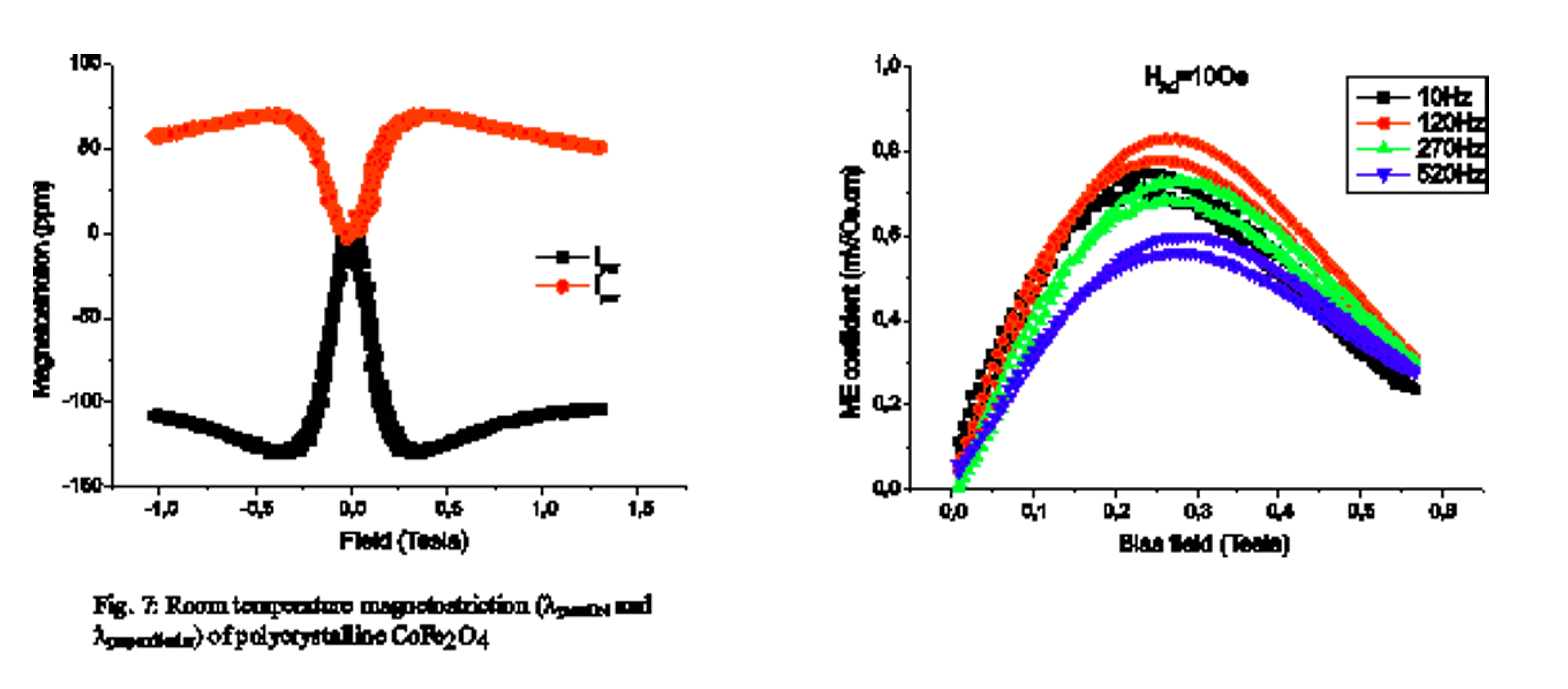Magnetostrictive and Magneto-Electric materials
Magnetostrictive materials TbFe2 exhibits the largest positive ( + 2600 ppm at room temperature) whereas SmFe2 exhibit the largest negative magnetostriction (- 2000 ppm at room temperature). A well-known problem in the practical application of TbFe2 compound is that due to the high value of K1 a large external magnetic field is required to achieve giant magnetostriction. Therefore, Tb is partly substituted by Dy where a magnetostriction value of 1500 ppm at room temperature was achieved for “Terfenol-D (Tb0.3Dy0.7Fe1.95)”. As an alternative solution to the substitution the effect of exchange coupling in nanocrystalline materials can be used to reduce the “effective” anisotropy. Exchange coupling may reduce the external field for saturation but it should not reduce the magnetostriction value.The following samples are investigated with respect to magnetostriction. Magnetostrictive materials such as SmFe2, TbFe2 (Tb,Dy)Fe2 in a nanocrystalline state. Intermetallics based on the general formula 3d-metal (Fe,Co) + additives – up to 20% (such as Ga, Ge, Pd or similar). In the last time oxides such as CoFe2O4 but also Manganates were found which exhibit also high magnetostriction values. Shape memory alloys based on Ni-.Mn-Ga are also under investigation. Magneto-Electric materials Recently research activities on the magnetoelectric (ME) effect—induction of magnetization by an electric field or of polarization by a magnetic field - are increasing. Two major sources for ‘large’ ME effects are identified. (i) In composite materials the ME effect is generated as a product property of a magnetostrictive and a piezoelectric compound. The ME effect is large if the ME coefficient coupling the magnetic and electric fields is large. This means that composites need materials with high magnetostriction together with materials with a piezoelectric effect. The coupling between the two phases depends sensitively on the microstructure of the material which can be influenced by the sample preparation as well as the treatment. Composites between CoFe2O4 and Bariumtitanat are under investigation. Cooperations:CIMAV (Mexico), Univ. Sheffield, VAC (Hanau), Lorena (Brasil)... |
Fig.1: Measuring system for the magneto-electric effect
Fig.2: Magnetostriction of CoFe2O4and magneto-electric coefficient of a composite with 50% Co-ferrite. |
Contact: R. Grössinger |



